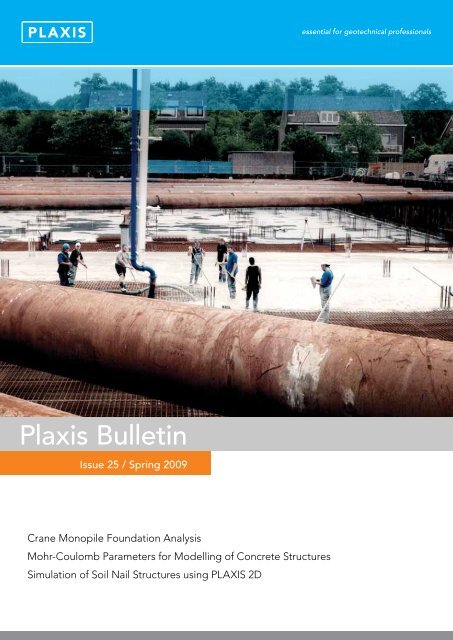

We will learn to design the pipe interaction with the soil and groundwater in a realistic way. In this training, we will be looking into the circular, non-circular geometry creation in PLAXIS 2D, checking of the stability of excavation (FOS determination), water movement during the excavation, along with the usual stages of construction of buried pipes. PLAXIS 2D can perform hydro-mechanical fully coupled analysis if necessary. It can be predicted that the slopes near the failed slopes are prone to failure because of similar soil properties. Design and analysis of any buried pipe, whether it is old or new can easily be modeled by PLAXIS 2D and analyzed with all possible traffic load, pipe water pressure and any effect of ambient temperature. Finite element analysis using Plaxis 2D with 15 noded element was found to capture the insitu stability condition. This has been raised to a geotechnical industry standard by PLAXIS 2D/3D.


With the use of Finite Element Analysis, interaction among, structural elements (pipes, liners), ground water and soil has become a reality. OnDemand Training | PLAXIS: Analysis of a Buried Pipeīuried pipes and culverts are the oldest civil engineering utilities defining the efficiency and comfort of a city/town. When using the PLAXIS Advanced or PLAXIS Ultimate version and enabling the Geotechnical SELECT Entitlement GSE when starting the PLAXIS application, this model becomes available in the Parameters. Research can be defined as a systemized effort to gain new knowledge, a voyage of. ProjectWise Explorer Virtuoso Subscription With the release of PLAXIS 2D/3D CONNECT Edition V21 (January 2021), this PLAXIS User Defined Soil Model is delivered with the PLAXIS installation. keywords: Soft Soil model, consolidation, north sea, clay, Plaxis 2D.


 0 kommentar(er)
0 kommentar(er)
